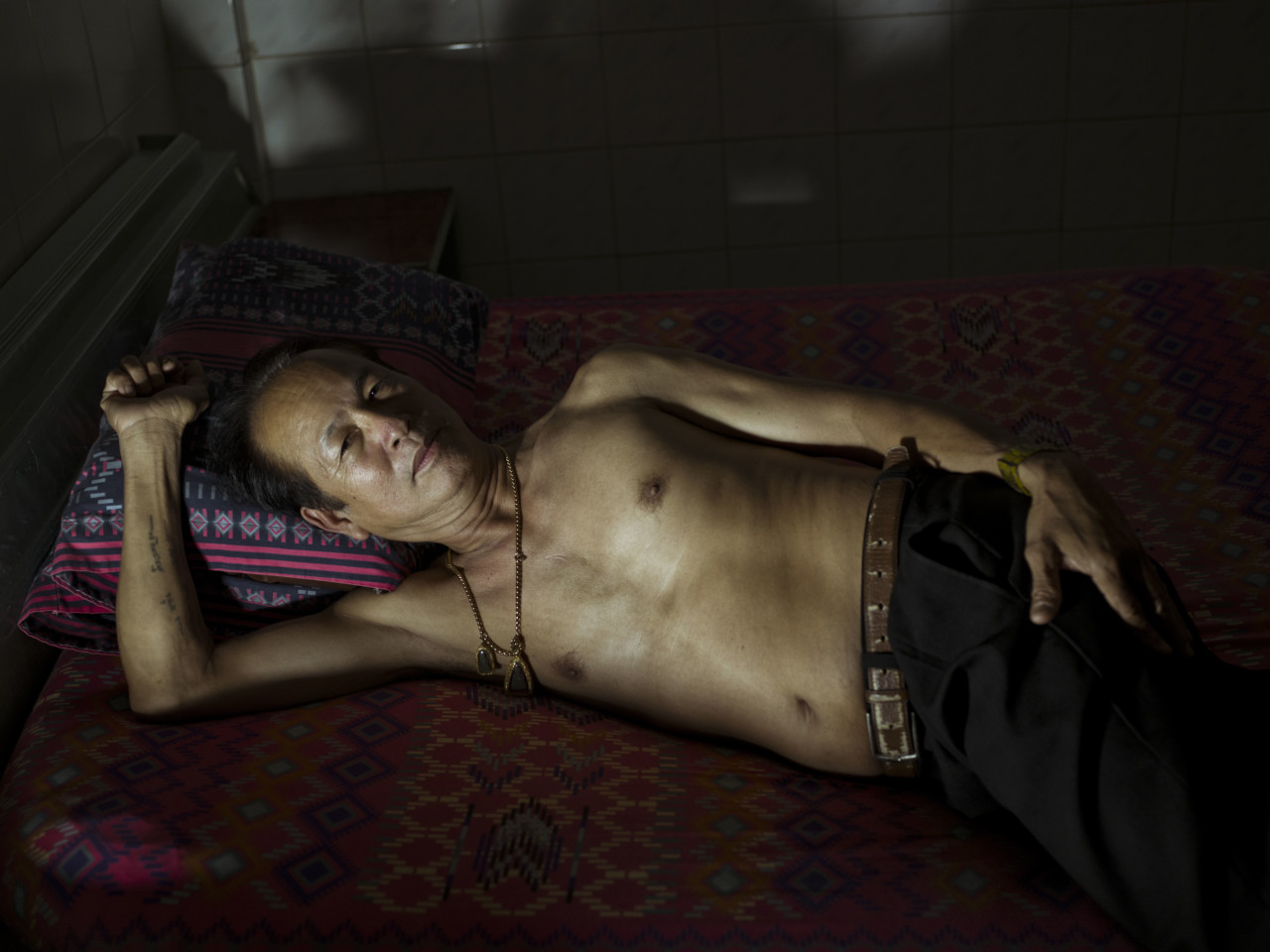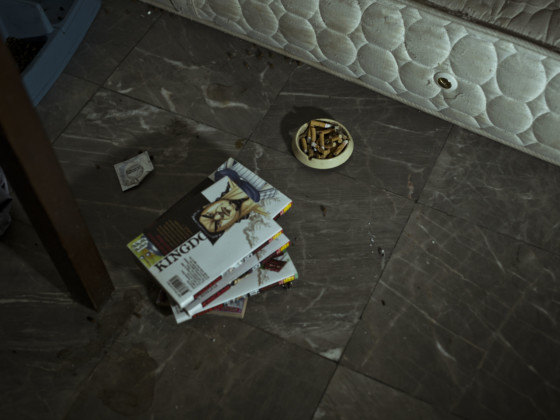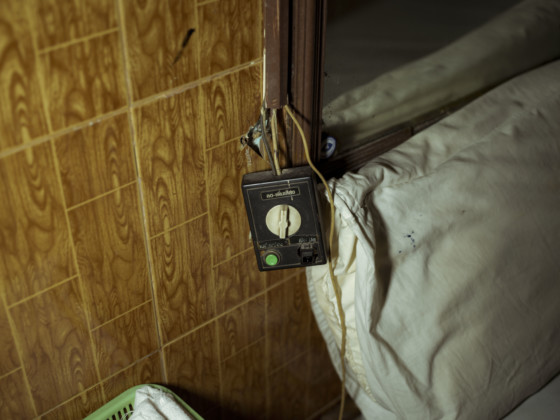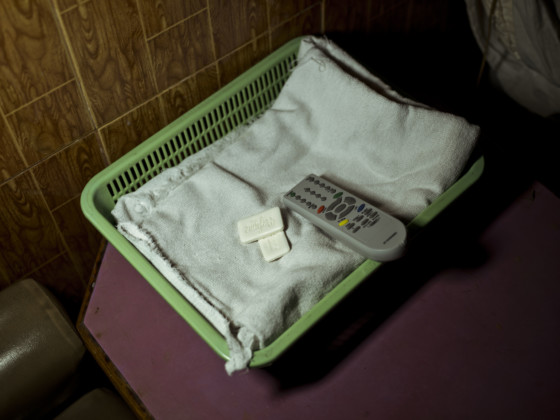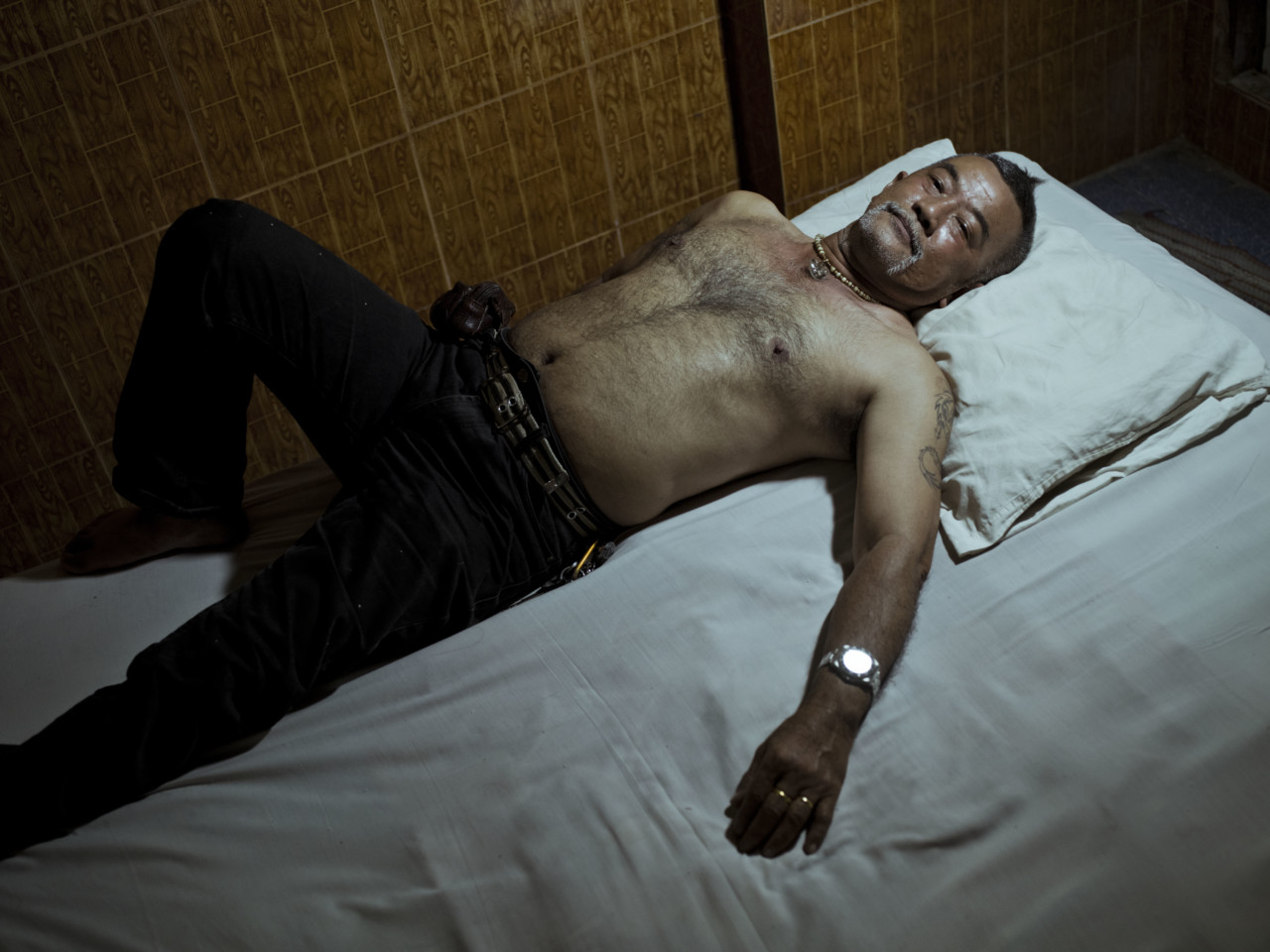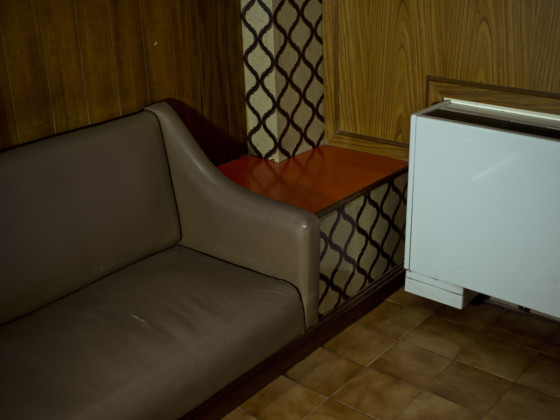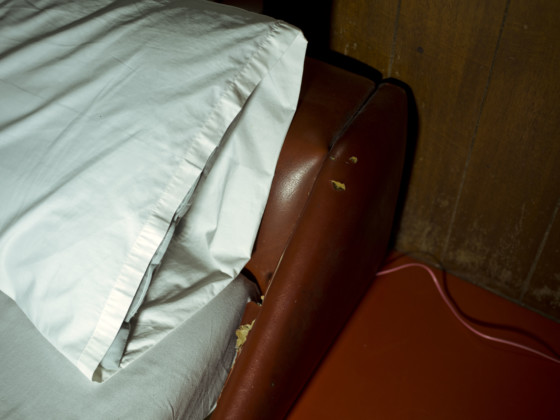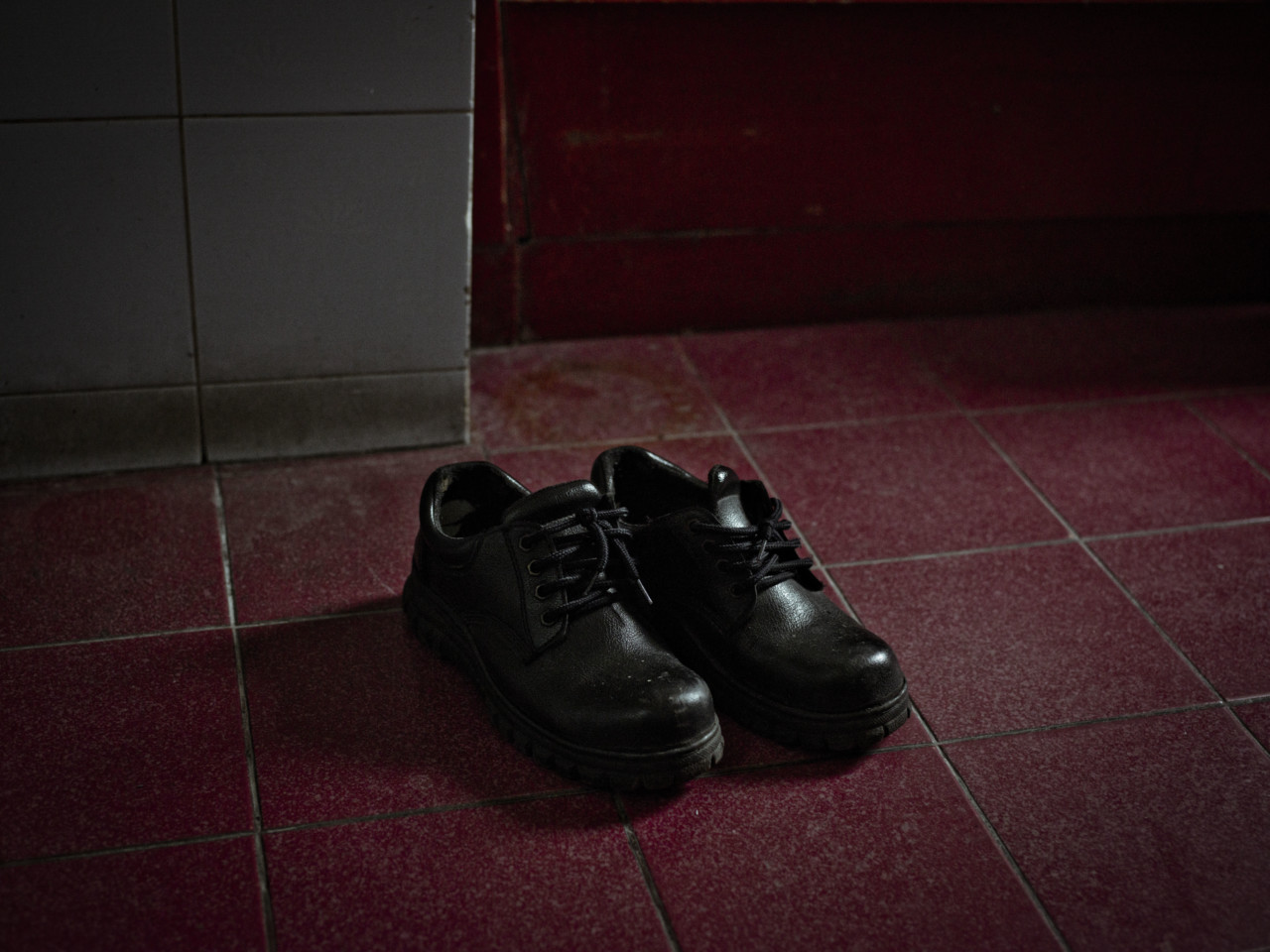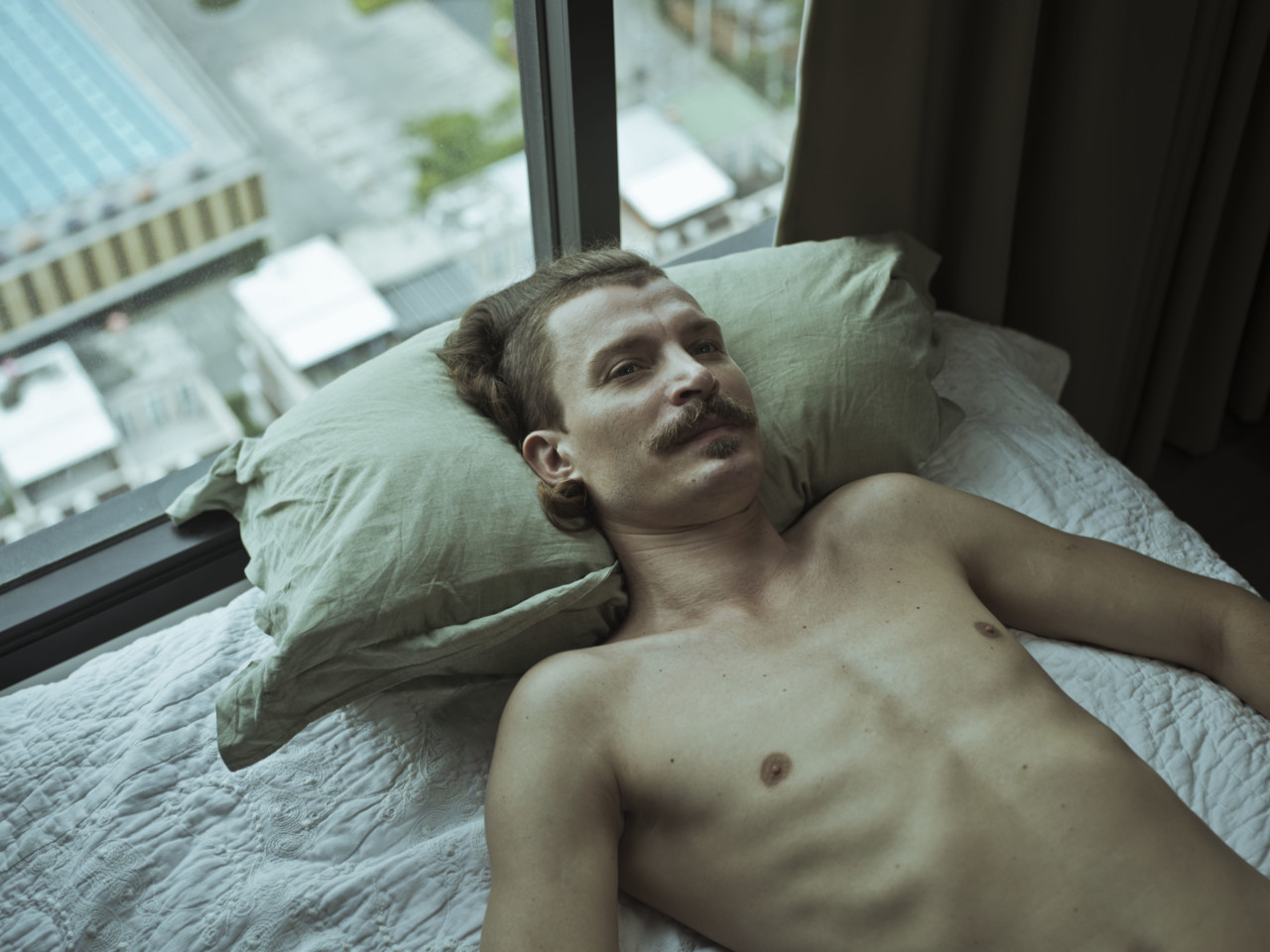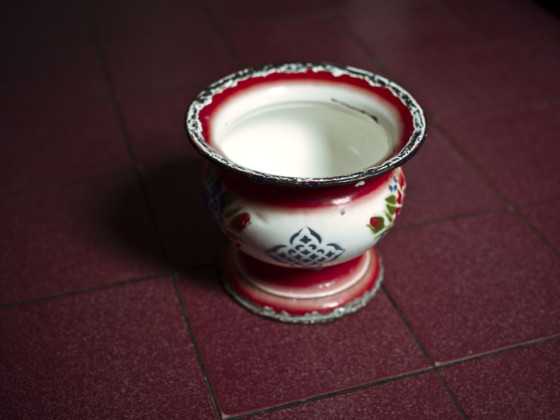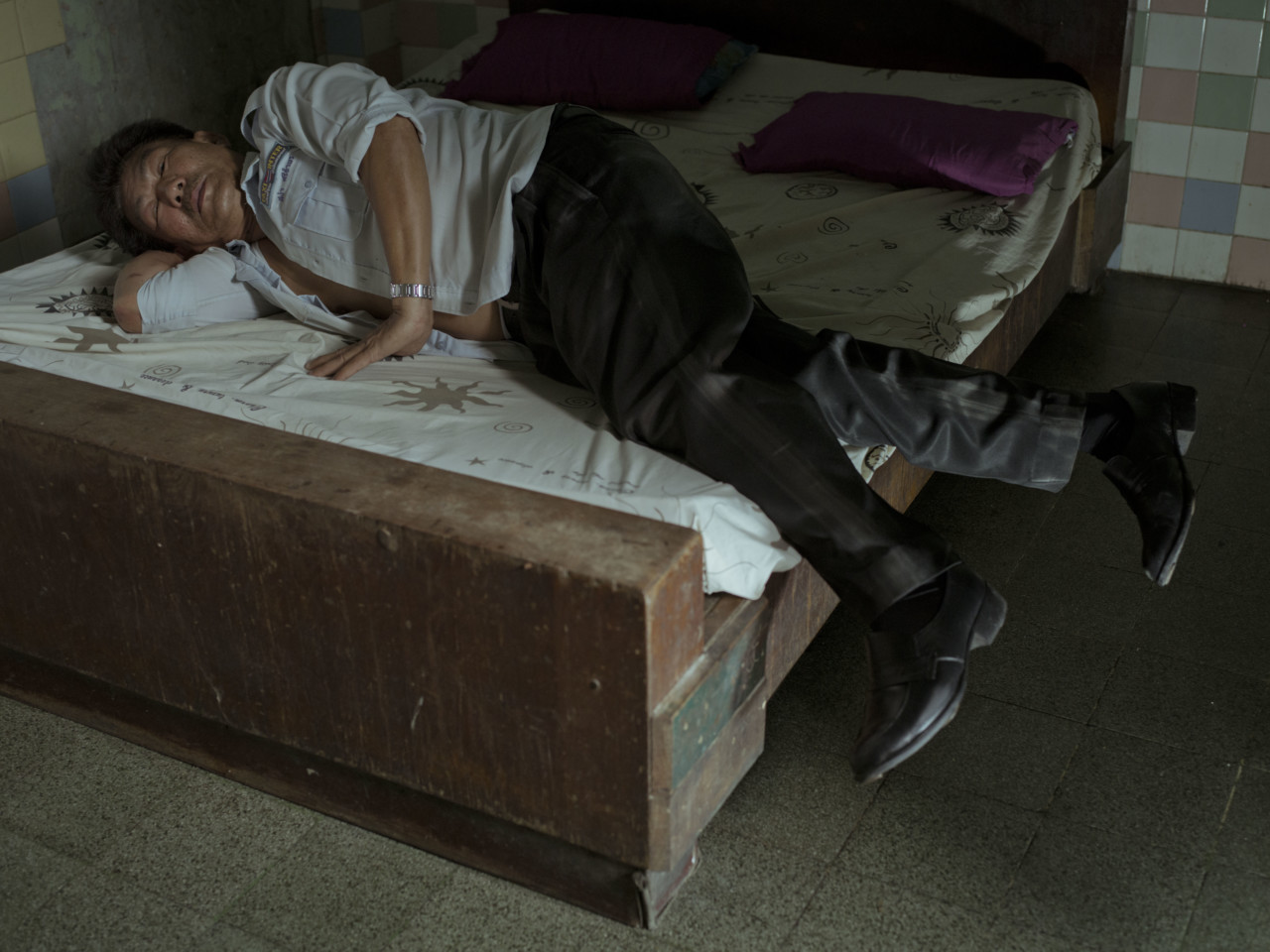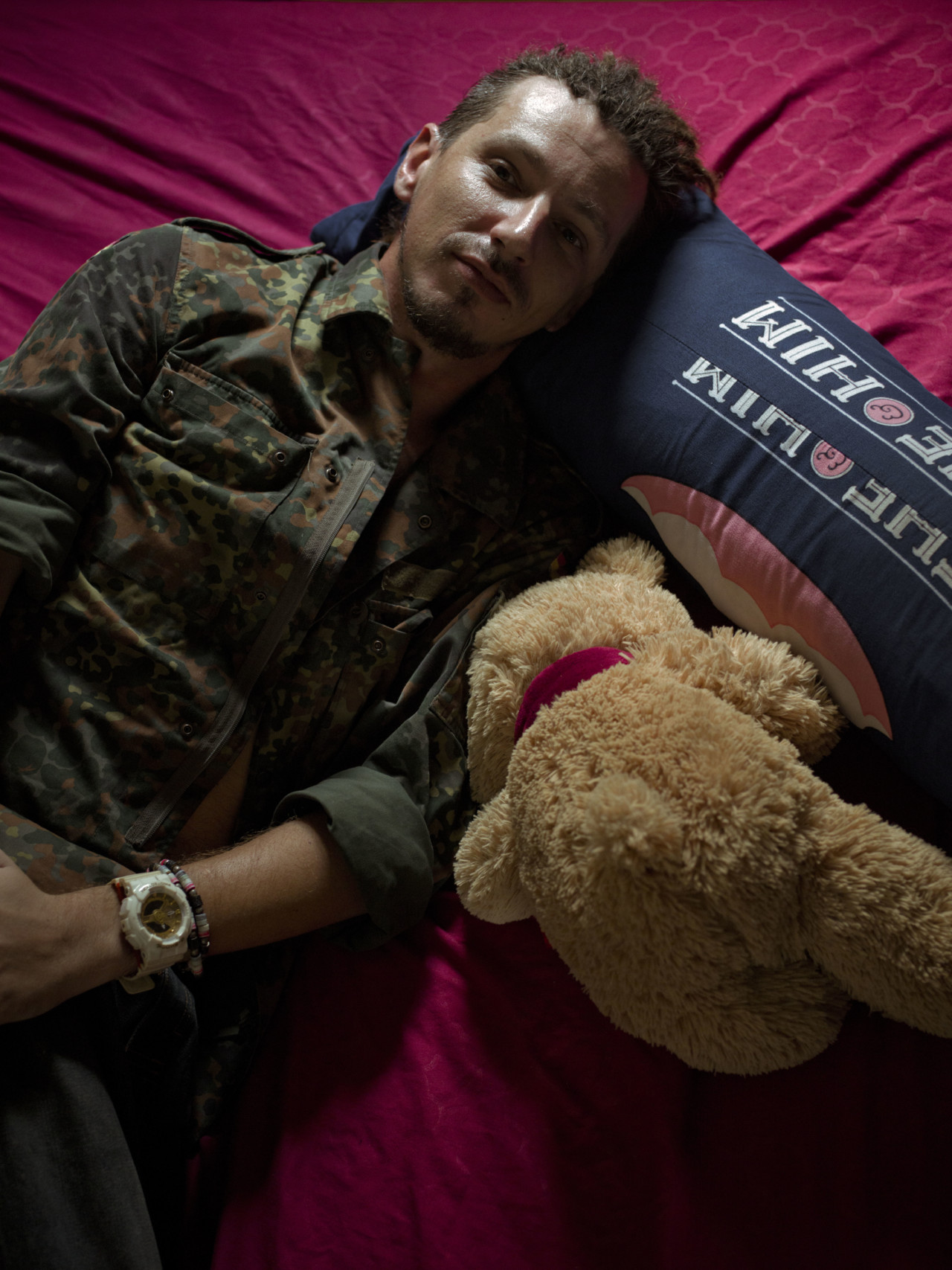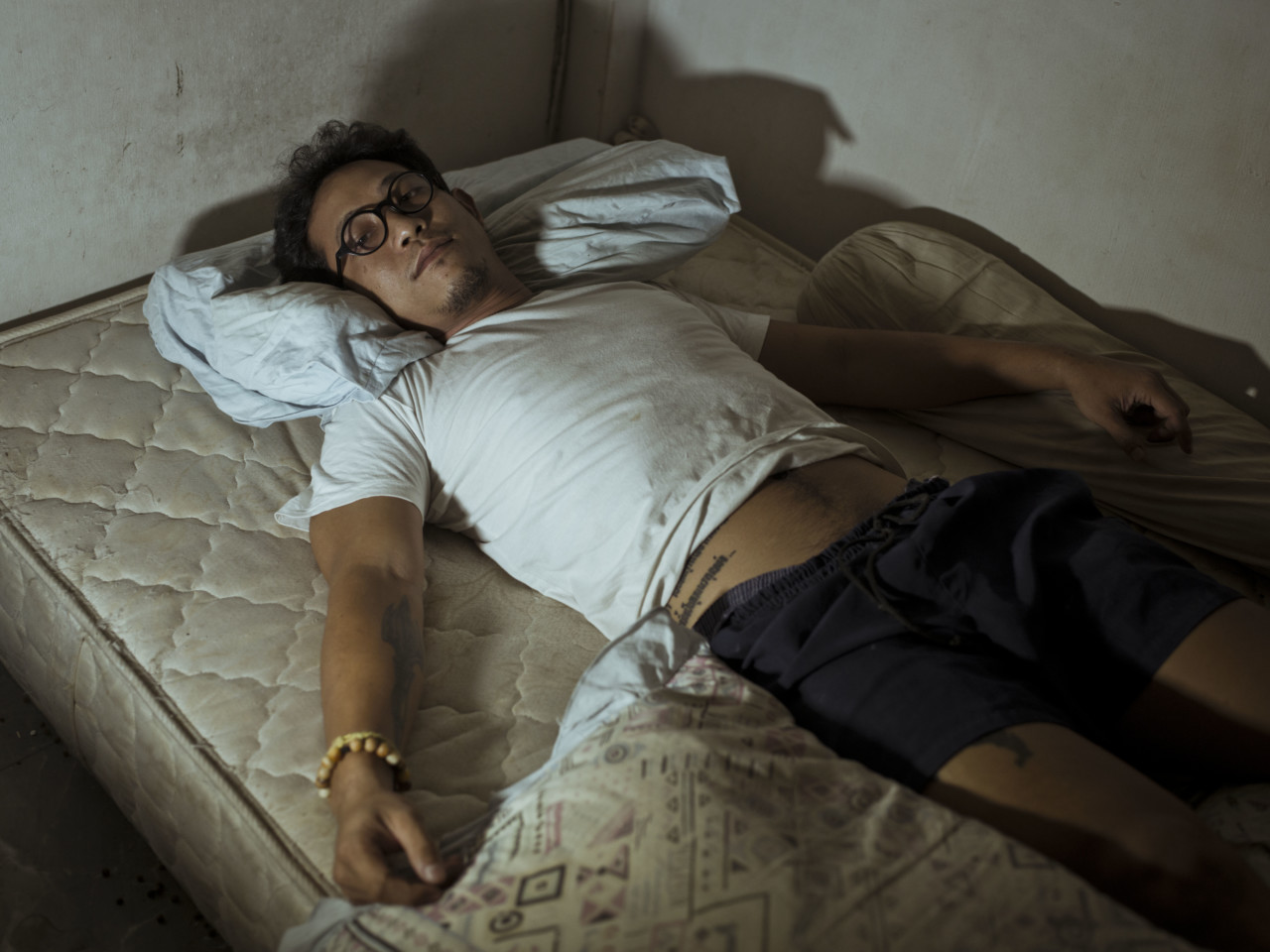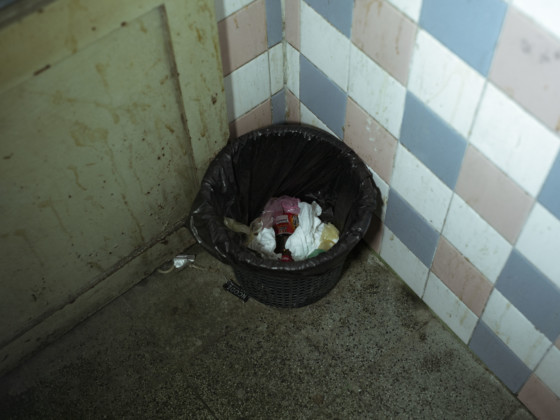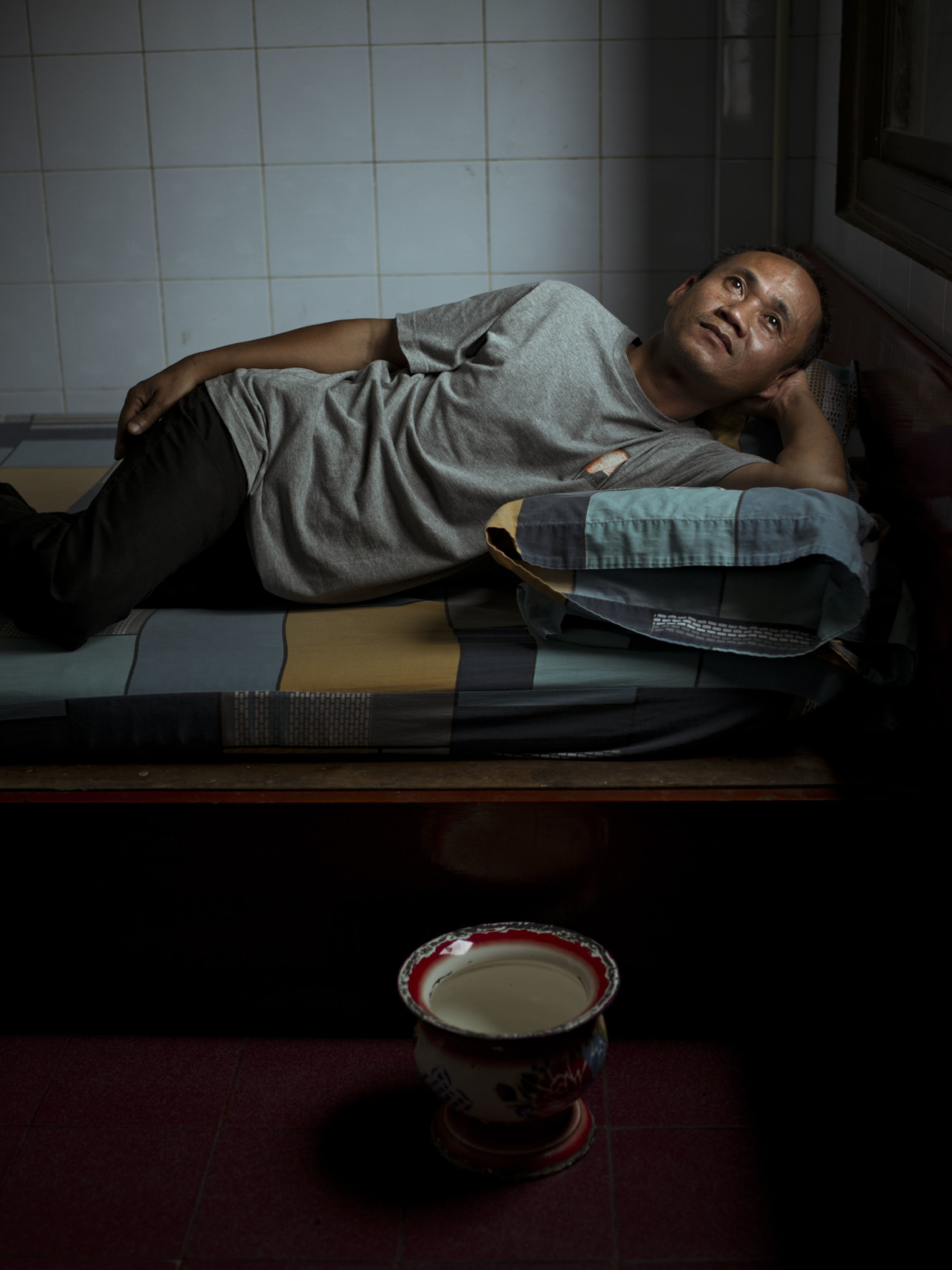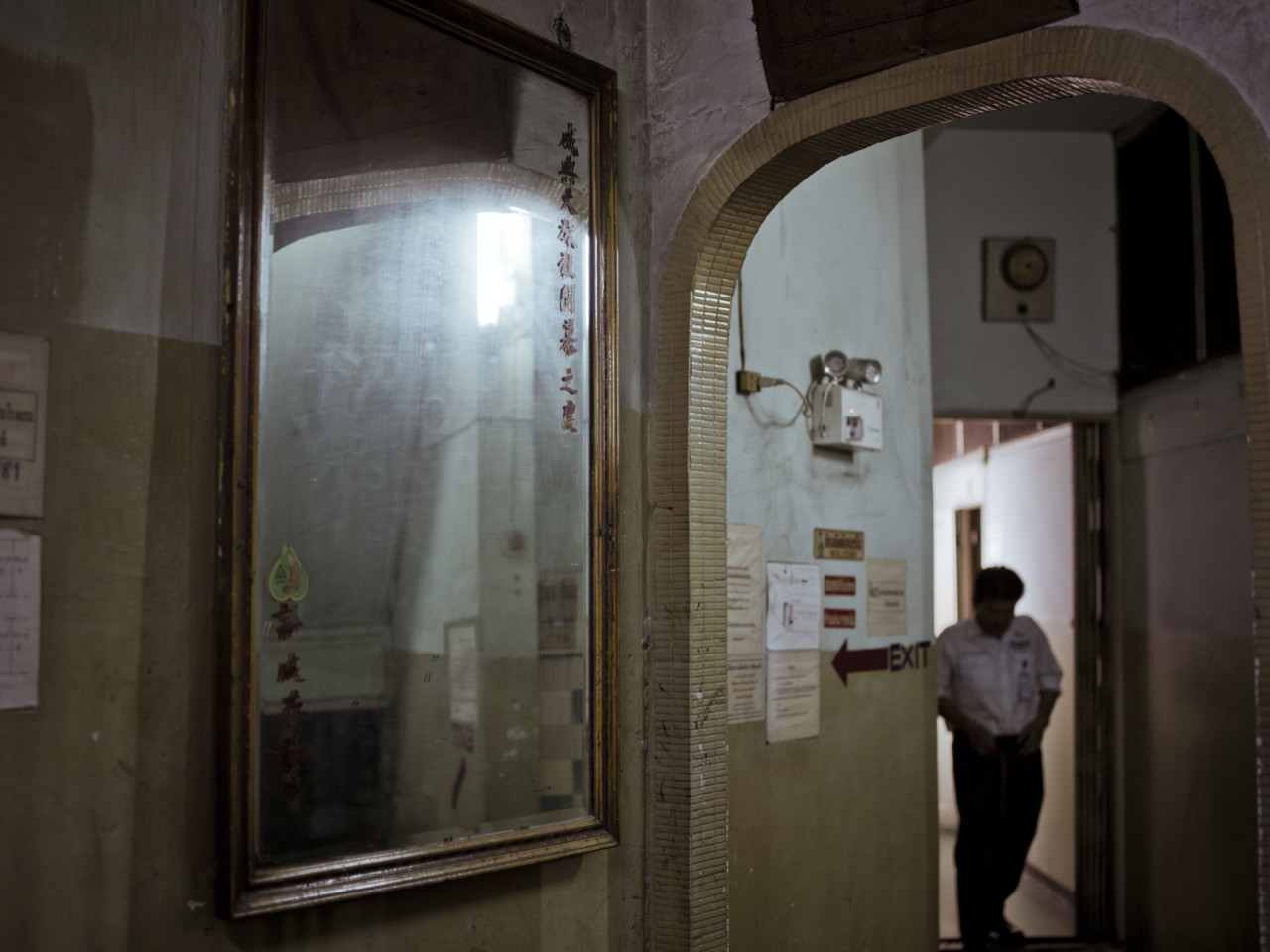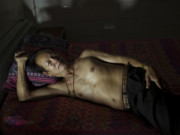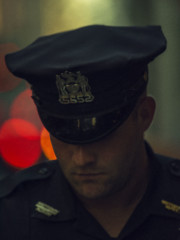Gentlemen’s Club Bangkok
Cristina de Middel’s ongoing project, Gentlemen's Club, focuses on prostitution’s less well documented side: men. In the latest instalment of the global series the photographer travelled to Thailand, where prostitution and the associated industries constitute a sizeable share of the nation's GDP
Cristina de Middel’s intimate portraits of men in low-lit rooms slowly draw us into a desire that drives them into the arms of prostitutes. It is here, in these dark corners hidden away from it all that men of all walks of life find themselves inextricably drawn to a fleeting encounter with a local sex worker.
For de Middel, the photographic reportage of prostitution had been reduced to a series of visual clichés revolving around women, sex, and capitalism. For all of the stories told time and again, the identity and lives of the clients was all but invisible. The Spanish-Belgian photographer, who now lives between Brazil and Mexico, has always enjoyed subverting the paradigms of the status quo to provide new sources of insight and understanding.
The ongoing project, Gentlemen’s Club, began in Rio de Janeiro with a simple advert placed two in free newspapers, Extra and O Dia. de Middel offered to pay clients for an hour of their time, during which she would photograph and interview them in a local hotel room. The response was overwhelming. With more than 100 people responding willing to participate, de Middel recognized a much larger story unfolding before her eyes.
Adopting a global perspective, de Middel decided to expand the project to cover eight major prostitution hubs on every continent around the world, bar Australasia. Since launching the project in June 2015, de Middel has completed the first leg of her journey: Rio, Havana, Paris, and Bangkok. Plans for Mumbai, Kiev or Moscow, Las Vegas, and Lagos are on deck, with de Middel focused on the key cities where photographers have traditionally gone to make stories about prostitution.
This August, de Middel returned from a three-week trip to Bangkok – a city where prostitution flourishes despite being de jureillegal. With revenues estimated to be worth US$6.4 billion in 2015, sex work is one of the leading contributors to the Thai GDP. For Gentlemen’s Club, de Middel focuses exclusively on cisheterosexual encounters, although she recognizes the industry is extremely diverse. The red light districts of Bangkok cater to any number of penchants and propensities inside the brothels, massage parlors, restaurants, and specialty bars.
Here, de Middel took a different approach to finding subjects. “I ask friends, or people I meet if they know ‘someone’ who uses a prostitute’s services – because I cannot ask them about themselves. They find people for me, because I am a woman,” she laughs. “These men all use prostitutes, but they have to find a friend who wants to pose instead of themselves.”
De Middel got her start on the project after meeting an art handler at Photo Bankgok known for discussing his dalliances. Together, they took a taxi to an area that services local men. Along the way, they struck up a conversation with their driver, who himself agreed to participate. “Then he called three more friends. It was like pulling a thread. Once there is one trusting you, then they all start popping up – but the first one is the hardest,” de Middel remembers.
Once at the hotel, de Middel assumes the position that the client traditionally occupies during the encounter: first booking the room for $10-$20 an hour, then paying the men the same amount they would spend on a prostitute.
“There were a few that realized what was going on. Right at the moment where I give the money, they go, ‘Ahhh, okay,’” de Middel observes knowingly.
“Most of the time, they take the money and they are happy about it because in the end, the motivation is the same as the woman’s: they do it because they need the money. They don’t do it because they want to do it. There are many clients who would never accept money to be in a picture, because they don’t need it.”
In Bangkok, de Middel worked with a translator to explain the idea of project to the men. Then, after signing a model release, she showed them examples from previous shoots so that they understand the concept of her work. Each session is broken up into two parts: first the portrait, then the interview.
For the portrait session, de Middel asked her subjects to pretend that they were in the hotel room at the very beginning of their encounter with a prostitute. “There are some who go to sex workers because they need affection and others who are really obsessed with sex. I tried to understand what kind of clients they are. It’s quite psychological,” de Middel observes.
Following the shoot, de Middel conducts a simple and straightforward interview that covers the client’s history, frequency, motivation, and cost for visiting prostitutes. She also asks them about their marital status, if they have children, and if their wives know about their visits to prostitutes.
“In Bangkok, half of the local men said they got drunk and their friends took them there. The others said they went out of curiosity. Prostitution is everywhere. There are different areas for Japanese clients, Arab clients, Western clients, and local clients. It is so accessible and cheap that I understand every man is like, ‘Why not try?’” de Middel notes.
“Then there were the Western tourists. All of them said that that they had their first prostitute encounter in Bangkok. Almost all of them said that they got tricked. They said they were drunk in a bar and thought that they had seduced a woman – just like that. They went to her house and then when they woke up in the morning they have to pay a huge amount of money, or she would call the police.”
Though the interviews were brief and direct, they provided many men with an unexpected opportunity to speak from the heart. “You never know what is going to happen. Sometimes they reply with one word and others are waiting for someone to ask them and the room becomes a confessional and they can say everything to a woman,” de Middel reveals.
“There are people you feel have the need to talk, so they project on me what they would say to their wife. I try not to project any judgment. I don’t want to blame them. I just want to understand. They have guilt in front a of a woman but when they are in front of a man, they don’t feel guilty. They show off. It’s really a gender-specific reaction.”
For de Middel, the portraits that make up Gentleman’s Clubare a form of visual justice, and an opportunity to go inside a very well known world and see what has largely been hidden from the public dialogue on the subject of prostitution. For as much as sex workers are studied at length, there appears to be a corresponding absence of attention paid to the clients.
“It’s quite exciting to break into that world and see it the other way around. It is a different approach to how things happen – and most of the time, it is forbidden to a woman,” de Middel says.
“Men can get this sort of information, they can go themselves, they can ask their fathers, brothers, whoever – but women, are you going to ask your husband, your brother, your father or just go in the streets and ask a prostitute how it is? Never going to happen. There is a part of the information, that is buried for women and that’s what I tried to find.”
Gentlemen’s Clubexposes a story that few have told about the “world’s oldest profession.” De Middel acknowledges, “These men want to stay invisible. The conversations were so deep. They could be anyone. It is two realities for two genders. If that information was available to wives, the idea of family might change. I understand why men are scared to talk openly about this.”


